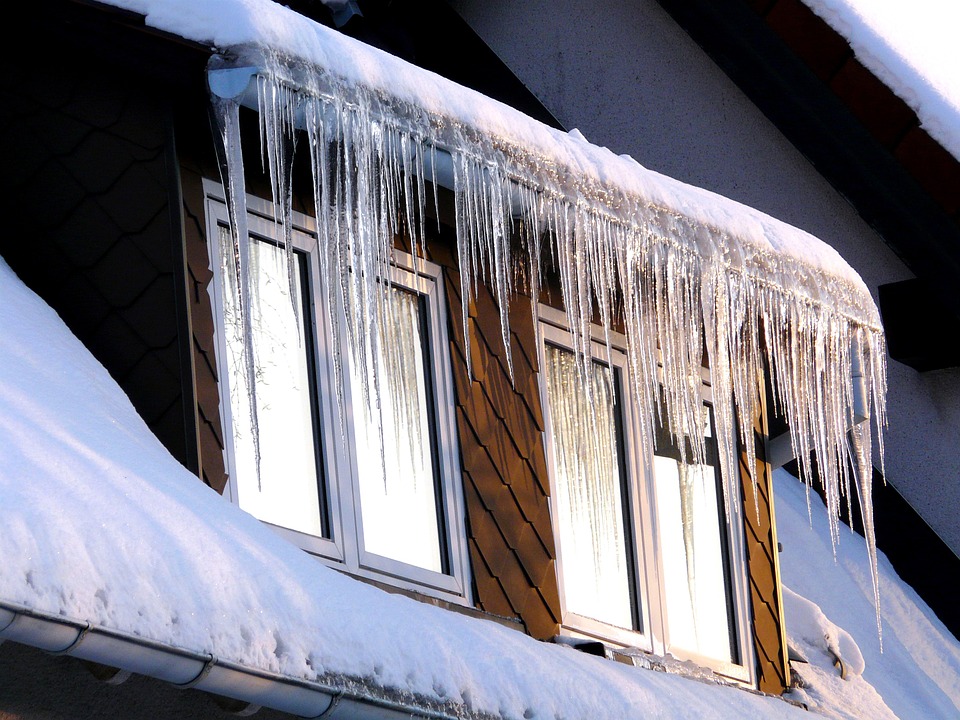The leaves are changing colors, the air is getting brisker, and the frost is starting to form on your car windshield in the mornings. It’s Fall again, and while that means good things like warm pumpkin pie amidst chilly autumn beauty, it also means the bad things, like in-laws during the holidays and winter preparations. Winterizing your home should be among your top priorities this Fall, and while the economy is bouncing back, nobody has time or money right now for expensive, bank-breaking projects unless it’s life or death. Fortunately, there are ways to winterize on the cheap this season, and we’re going to talk about them here.

Inspect for Drafts & Seal
One of the biggest culprits causing your rising heating bill this winter is going to be leakage. Tiny breaches that lead to the outside world are going to cause drafts–unless you find them and seal them first, of course. For your doors, you might need to used a door snake to keep breezy air from entering through the crevice underneath. After that, check out every window in your home and run your hand along the edges, checking for cool, drafty spots. Use caulk, which can be purchased at most home improvement stores for cheap, to seal and keep the heat in the for the winter. Experts recommend exterior-grade when caulking on the outside as well as either 100 percent silicone sealant or a “siliconized” acrylic variant.
Treating Your Windows
You’re not done with the windows yet. Not surprising, seeing as Green America predicts 10 to 20 percent of your heating bill is lost through the glass every winter. You can minimize this loss by putting a layer of film over the glass, and the cheapest, most effect form of this film is actually bubblewrap. Of course, bubble wrap can be an eyesore, so you might want to go with the professionally manufactured window treatment film found at most department stores.
Another window tip comes in the form of heavy, layered, and insulated curtains, and keeping your windows covered during the night time when it’s coldest outside, and open during the day. Keeping them open during the day will allow you to naturally raise the temperature in your house and save energy and money on that pesky heating bill.
Use the Oven!
A great way to heat your house in the winter is to get your bake on. If you’re a baker, the high heat generated by the oven will not only contribute to your pastries, pies, breads, and brittles, but also to your house’s overall heat! Ovens in use produce this heat anyway, so why not harness it and save a little bit on your overall energy bill? This method is also a sound way to reduce your carbon footprint.
Reverse Ceiling Fans
Chances are, if you’re coming out of the summer, your ceiling fans will have been running in a counterclockwise direction (looking up at it), and pushing cool air downward and toward you. In the winter, however, industry advice for years has said that you should reverse the way that your fan ceiling fans spin to clockwise and run them at a low speed. This is because heat rises, and warm air pools near your ceiling during the cold month. Running ceiling fans clockwise can help draw cool air up from floor level and push the warm air down, keeping your and your family toasty. Running the fan at the lowest speed will cost way less in energy than running your furnace, so consider this frugal tip before you even think about touching that thermostat.
Programmable Thermostat
Come to think about it, why should you ever touch your thermostat again? Consider a programmable thermostat, or a “smart” system, if you want to call it that. Smart systems such as the Nest Learning Thermostat can help to reduce energy bills by up to 20 percent in one year, and that installation process is simple. By turning the heat significantly down when you’re out of the house and turning it back up just in time for you to get home and enjoy your cozy creature comforts, you have remote control of your house’s heating and air and are also impacting the environment much less than you would have before. This works with the HVAC in the summer as well.
Just remember, when it comes to winterizing your home, fixing problems before they become even bigger problems is key. Don’t sleep on your responsibilities!














